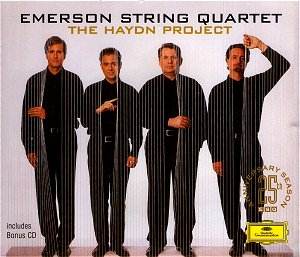 Composer: Bridge, Britten
Composer: Bridge, Britten
Works: Frank Bridge: Sonata for Cello and Piano (1913-17), Meditation (c. 1912), Spring Song (c. 1912), Serenade (1903), Berceuse (1901), Scherzo (1902), Elégie (1904), Cradle Song (1910), Mélodie (1910)
Benjamin Britten: Sonata in C for Cello and Piano, Op. 65 (1960-1)
Performers: Øystein Birkeland (violoncello), Vebjørn Anvik (piano)
Recorded: Lommedalen Church, 4-7 April 2000
Label: SIMAX PSC 1160
Duration: 70:16
In this illuminating and well-crafted recording, Øystein Birkeland and Vebjørn Anvik present a compelling juxtaposition of works by Frank Bridge and his illustrious pupil, Benjamin Britten. The selection is a thoughtful exploration of the evolution of British cello repertoire during the early to mid-twentieth century, highlighting the lyrical and structural ingenuity of both composers.
The performance opens with Bridge’s short pieces, which, though not originally intended as such, serve as a delightful prelude to the more substantial works. The Meditation and Spring Song resonate with a charm reminiscent of the salon music of the early twentieth century, yet they also hint at the deeper emotional currents that Bridge would later explore. The Berceuse (1901), infused with a sense of innocence and nostalgia, is executed with delicate nuance, while the Scherzo (1902) showcases a rhythmic vitality that Birkeland and Anvik handle with spirited grace.
Bridge’s Elégie (1904) marks a significant maturation in his compositional voice. Here, the duo’s interpretative choices shine through; Birkeland’s rich, autumnal tone captures the piece’s introspective quality, while Anvik’s sensitive accompaniment provides an evocative backdrop. The Cradle Song (1910) and Mélodie (1910) further demonstrate Bridge’s capacity for lyrical beauty, with the latter emerging as an unabashedly romantic outpouring. These short works can now lay proud claim to a place in the cello repertoire, akin to Fauré’s brief yet essential contributions.
Transitioning to the Sonata for Cello and Piano (1913-17), the duo’s synergy becomes even more pronounced. Here, the work’s complex emotional landscape is rendered with a clarity that allows each thematic development to resonate profoundly. Birkeland’s interpretation of the sonata’s expansive first movement is marked by an eloquent shaping of phrases, allowing the listener to appreciate the underlying harmonic tensions. Anvik, though occasionally presenting a more robust sound that borders on the percussive, ultimately supports Birkeland’s expressive arc effectively.
In contrast to Bridge’s earlier works, Britten’s Sonata in C for Cello and Piano, Op. 65, composed in the early 1960s, presents a different challenge. Britten’s thematic material is more elusive, often requiring a greater interpretative leap from the performers. The sonata’s intricate counterpoint and shifting textures demand a high level of virtuosity and understanding from both musicians. Birkeland navigates Britten’s demands with assurance, bringing a sense of gravitas to the work’s darker passages. The hauntingly beautiful second movement, Lament, is particularly striking, with Birkeland’s rich vibrato enhancing the emotional weight of the music.
While this recording may not eclipse the legendary interpretations by Rostropovich and Britten themselves, Birkeland’s artistry is commendable, offering fresh insights into both composers’ musical dialogues. Anvik’s piano contributions, though occasionally less nuanced, form a solid partnership that complements Birkeland’s vocality, resulting in a performance that resonates with both warmth and depth.
The recording quality is commendable, capturing the resonant acoustics of Lommedalen Church, which lend an organic richness to the cello’s tone. The clarity of sound allows for a nuanced appreciation of timbral contrasts, essential for fully appreciating the intricacies of Bridge’s and Britten’s writing.
Historically, Bridge’s works are a testament to the late-Romantic and early-Modern transitions within British music, while Britten’s sonata reflects the composer’s mature style, characterized by a blend of traditional and avant-garde elements. The inclusion of Bridge’s miniatures alongside the Britten sonata serves to contextualize the evolution of the cello repertoire, illustrating how these two composers, linked by mentorship, contributed distinctively to the landscape of British music.
In conclusion, this recording by Birkeland and Anvik is not merely a compilation of cello works but a narrative arc that connects two pivotal figures in British music. Their interpretations invite the listener to engage with the emotional and structural complexities of each piece. The synergy between the performers, the meticulous attention to detail, and the historical significance of the works rendered make this album a valuable addition to the canon of cello recordings.


